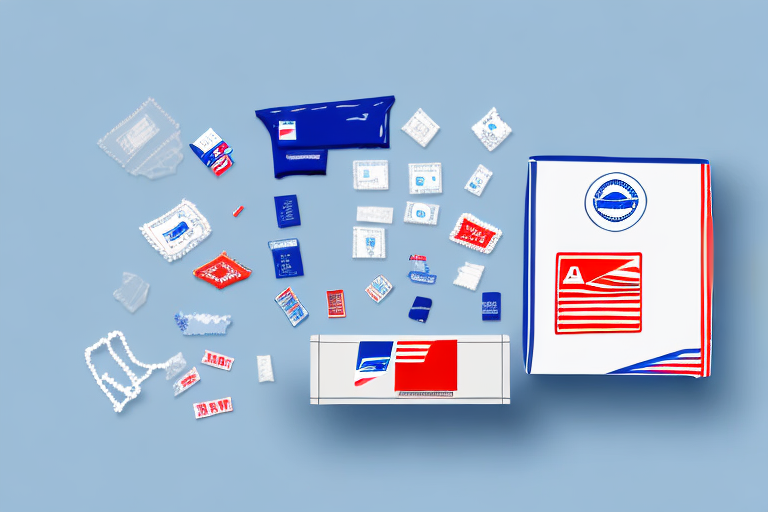UPS Guaranteed Service Refund Suspended: What You Need to Know
The UPS Guaranteed Service Refund Program has been suspended, leaving many businesses and individuals concerned about the impact on their shipping logistics. This article offers an in-depth analysis of the situation, including the reasons behind the suspension, its effects on businesses, and alternative options for those affected.
Understanding the UPS Guaranteed Service Refund Program
The UPS Guaranteed Service Refund Program ensures that packages are delivered on time, or a refund is issued to the shipper. This program covers all UPS Worldwide Express, Freight, and UPS Worldwide Express Plus shipments. The program is designed to provide shippers with confidence that their packages will arrive without delays.
To qualify for a refund, certain terms and conditions must be met. Packages must be shipped using an eligible UPS service, and delays must be attributable to UPS rather than external factors like weather or customs issues. Additionally, shippers must submit refund requests within a specified timeframe. For more details, refer to the UPS Claims page.
Shippers can utilize UPS's tracking tools to monitor their packages in real-time, providing updates on location and estimated delivery times. In the event of a delay, contacting UPS Customer Service is essential to inquire about the status and verify eligibility for a refund under the Guaranteed Service Refund Program.
Why Has the UPS Guaranteed Service Refund Program Been Suspended?
The suspension of the UPS Guaranteed Service Refund Program has been attributed to several factors, including the ongoing effects of the COVID-19 pandemic and unprecedented shipping demands during peak seasons. According to a UPS press release, the decision aims to better manage package deliveries during exceptionally high shipping volumes and the uncertainties brought about by the pandemic.
While the suspension is not permanent, UPS has indicated that the program will be reinstated once shipping operations stabilize. Customers are advised to stay updated through official UPS channels for announcements regarding the program's resumption.
In response to the suspension, UPS has implemented measures to enhance delivery efficiency, including hiring additional staff and investing in advanced sorting technologies. These steps aim to minimize delays and maintain service quality during this period.
Impact of the UPS Guaranteed Service Refund Suspension on Shipping Businesses
The suspension significantly affects businesses that depend on UPS for their shipping needs. Without the Guaranteed Service Refund, businesses face increased risks of delayed deliveries, which can lead to lost customers and reduced revenue. In 2022, UPS handled over 10 billion packages globally, highlighting the scale of its operations and the potential impact of service interruptions.
Moreover, the absence of a refund program means that businesses bear the financial burden of any losses resulting from delayed shipments. This has prompted some companies to reconsider their shipping strategies and explore alternative carriers.
The suspension may also intensify competition among shipping carriers like FedEx, USPS, and DHL. Businesses might diversify their shipping portfolios to mitigate risks and ensure timely deliveries, potentially leading to shifts in market share within the logistics industry.
Additionally, businesses may need to enhance their internal shipping processes. Investing in better packaging, advanced tracking systems, and improved customer communication can help maintain service reliability and customer satisfaction despite the challenges posed by the suspension.
What Are Your Options If You Have a Late Delivery from UPS?
If you've experienced a late delivery from UPS, several actions can help mitigate the situation:
- Contact UPS Customer Service: Report the late delivery to initiate an investigation. If the delay is confirmed to be UPS's responsibility, compensation may be offered.
- File a Claims Online: Utilize UPS's online claims system to submit a formal request for compensation. Ensure you provide all necessary documentation to support your claim.
- Check Tracking Information: Monitor your package's status through UPS tracking tools to determine the extent of the delay and gather evidence for your claim.
Understanding UPS's specific guidelines is crucial. For instance, a package not delivered by the end of the scheduled delivery day qualifies as late, whereas next-business-day deliveries may not. Reviewing the UPS Service Guarantees can provide clarity on eligibility.
In urgent cases, requesting a refund for shipping charges might be viable, depending on the circumstances and UPS policies. Contacting UPS Customer Service promptly will help determine the best course of action.
How to File a Claim for a Late Delivery with UPS
Filing a claim for a late delivery with UPS involves the following steps:
- Visit the UPS Claims portal.
- Provide the necessary information, including:
- Tracking number
- Date of shipment
- Type of shipment (e.g., air, international)
- Date of delivery
- Recipient's address
- Shipment's value
- Description of package contents
- Submit supporting documentation, such as proof of shipment and delivery details.
After submission, UPS will investigate the claim and determine eligibility for compensation based on the provided information.
Be aware of limitations, such as delays caused by uncontrollable factors (e.g., severe weather) or issues arising from improper packaging, which may void the claim. For detailed guidelines, refer to the UPS Claims Terms and Conditions.
If you encounter difficulties during the claims process, contacting UPS Customer Service can provide additional assistance and clarification.
The Process of Getting Compensation for a Late Delivery from UPS
Obtaining compensation for a late UPS delivery involves a structured process:
- Submit a Claim: File a claim through the UPS Claims system with all required documentation.
- Investigation: UPS will investigate the circumstances surrounding the delay to determine liability.
- Decision: If the claim is validated, UPS will issue reimbursement for eligible losses.
Claims typically must be filed within 15-30 days of the delivery date. Providing comprehensive and accurate information increases the likelihood of a successful claim.
Common documentation includes:
- Proof of shipment and delivery dates
- Receipts or invoices demonstrating shipment value
- Evidence of delay attribution to UPS
Understanding the specific guidelines and deadlines outlined by UPS is essential to avoid claim denials.
Alternative Shipping Providers to Consider in Light of the UPS Guaranteed Service Refund Suspension
Businesses affected by the suspension have several alternative shipping providers to consider:
- FedEx: Offers a variety of shipping options, including FedEx Express and FedEx Ground, with robust tracking capabilities.
- USPS: Provides competitive rates for domestic shipping and services like Priority Mail Express for faster deliveries.
- DHL: Specializes in international shipping with extensive global coverage.
Additionally, Amazon Shipping is an option for businesses selling on Amazon, offering competitive rates and efficient delivery services. Regional carriers like OnTrac and LaserShip can provide faster delivery times and lower rates within specific areas, making them viable alternatives depending on your shipping needs.
It's recommended to research and compare shipping rates, services, and coverage areas to identify the best alternative provider for your specific requirements. Utilizing comparison tools and consulting industry reports can aid in making informed decisions.
Tips for Mitigating the Risks of Late Deliveries During the UPS Guaranteed Service Refund Suspension
Businesses can employ several strategies to reduce the risks associated with late deliveries during the UPS program suspension:
- Enhance Communication: Keep customers informed about potential delays by providing regular updates on shipping status.
- Adjust Shipping Schedules: Modify order processing and shipping cut-off times to accommodate extended delivery windows.
- Diversify Shipping Providers: Utilize multiple shipping carriers to balance delivery loads and reduce dependency on a single provider.
- Invest in Technology: Implement advanced tracking and inventory management systems to improve shipping efficiency and transparency.
- Improve Packaging: Ensure packages are well-packaged to prevent delays caused by damages or returns.
By adopting these measures, businesses can maintain service reliability and customer satisfaction despite the challenges posed by the suspension.
What Does This Mean for Online Retailers and E-commerce Businesses?
The suspension of the UPS Guaranteed Service Refund Program has significant implications for online retailers and e-commerce businesses. Timely delivery is crucial for maintaining customer satisfaction and fostering repeat business. Without the assurance of a refund program, businesses must adapt to ensure reliable shipping:
- Reevaluate Shipping Strategies: Consider alternative carriers or a combination of multiple carriers to enhance delivery reliability.
- Enhance Customer Communication: Provide clear information about shipping times, potential delays, and tracking options to manage customer expectations.
- Optimize Inventory Management: Maintain sufficient stock levels and streamline order processing to reduce shipping times.
- Offer Multiple Shipping Options: Provide customers with various shipping choices, including expedited and standard options, to cater to different needs.
Adapting these strategies can help e-commerce businesses navigate the challenges posed by the suspension and continue to meet customer expectations effectively.
How Customers Can Protect Themselves When Shipping with UPS During the Suspension Period
Customers can take proactive steps to safeguard their shipments during the UPS Guaranteed Service Refund suspension:
- Select Guaranteed Delivery Options: Opt for UPS shipping services that still offer delivery date guarantees to ensure timely arrival.
- Utilize Real-Time Tracking: Regularly monitor shipment status using UPS's tracking tools to stay informed about any delays.
- Choose Appropriate Shipping Times: Send packages well in advance of deadlines to account for potential delays.
- Maintain Proper Documentation: Keep all shipping receipts, tracking numbers, and related documentation to facilitate any potential claims.
- Communicate with UPS: Reach out to UPS Customer Service promptly if issues arise, ensuring timely resolution and support.
These measures can help customers minimize the impact of shipping delays and ensure their packages arrive as expected.
The Future of the UPS Guaranteed Service Refund Program: Speculations and Predictions
While the UPS Guaranteed Service Refund Program remains suspended, its future outlook depends on multiple factors, including shipping demand trends and operational adjustments made by UPS. Potential developments include:
- Program Reinstatement: UPS may resume the program once shipping volumes stabilize and operational efficiencies are enhanced.
- Program Modifications: UPS might revise the terms and conditions of the program to better manage peak shipping periods and reduce the likelihood of future suspensions.
- Enhanced Technology: Investment in advanced sorting and tracking technologies could improve delivery reliability, supporting the return of the refund program.
Industry analysts predict that UPS will prioritize restoring the Guaranteed Service Refund Program to maintain customer trust and competitive edge. Monitoring official UPS announcements and industry reports will provide insights into upcoming changes.
Analysis of Previous Suspensions in the History of the UPS Guaranteed Service Refund Program
The UPS Guaranteed Service Refund Program has experienced suspensions in the past, particularly during high-demand periods like the holiday seasons of 2014 and 2015. These suspensions typically affected specific shipping options rather than the entire program.
The current suspension is broader, encompassing all shipping options covered by the program. This comprehensive suspension underscores the significant challenges UPS faces in managing peak shipping volumes and operational constraints.
Historical suspensions highlight the need for adaptability in shipping logistics. UPS's responses to past suspensions involved temporary measures to handle increased demand, which may inform how the company navigates the current suspension.
In conclusion, the suspension of the UPS Guaranteed Service Refund Program has far-reaching implications for both businesses and consumers. Understanding the reasons behind the suspension, its impact on shipping logistics, and exploring alternative options are crucial for mitigating disruptions. By adopting strategic measures and staying informed about program updates, businesses can continue to provide reliable shipping services and maintain customer satisfaction.








